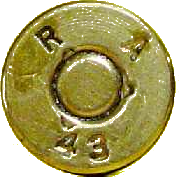Ysterhout Dot Net
... or the box tracking test.
This is illustrated by Ryan Cleckner demonstrating a scope tracking drill.
When you do this test, shoot a group of at least three at each corner of the box, so you can get a more accurate indication of the actual point of aim, and use a larger backing to get more distance between the points of impact. By using a group instead of one shot, and a larger distance, you can measure your groups center to center, and use this data to determine the windage correction factor.
In the video, Ryan has inadvertantly proven that although his scope is tracking repeatably, it is not tracking true. The scope introduces an elevation change when changing windage. The result shows a square who's corners are rotated a few degrees around center. At the end Ryan mentions the offset, and attributes it to needing a zero check.
In Ryan's case, there is either a problem with the scope itself, or the scope is angled in the rings. When you do this test, shoot a group of at least three at each corner of the box, so you can get a more acccurate visual of how the point of impact is changing. Ryan did not shoot a group, so the top right point of impact is most likely just a flyer, the other three points indicate a scope not aligned to vertical.
If this scope is now used for a tall target test, it will track about 3 degrees to the right of the vertical.
Do this test first, before the tall target test, because if there is a problem it will invalidate the tall target test results.
The best backing to use for these tests is the packaging from large appliances - refrigerator, washing machine or dishwasher. Tall refrigerator packaging is the best.
Make sure your scope tracks properly to the points on a square. Do this even if you have the most expensive scope, do not assume the scope is perfect. Test it.
This is a faulty scope. It was not obvious to me then that there was a problem with the tracking. At the time, my ability to hold zero with the rifle was in it's infancy. I presumed that the out of position groups were shooter error.
It took some time and more shooting before I was confident that I was not the problem and I broke the test down into separate elevation and windage tracking. The elevation tracking test showed that the problem was the scope.
Adjusting elevation with no windage adjustment produced a windage shift to the left. This scope was sent back to the supplier, and replaced under guarantee as it could not be repaired.
When your test proves successfull, the ratio of expected windage adjustment to actual windage adjustment can then be included as a column on the drop chart, to calculate actual windage values.



